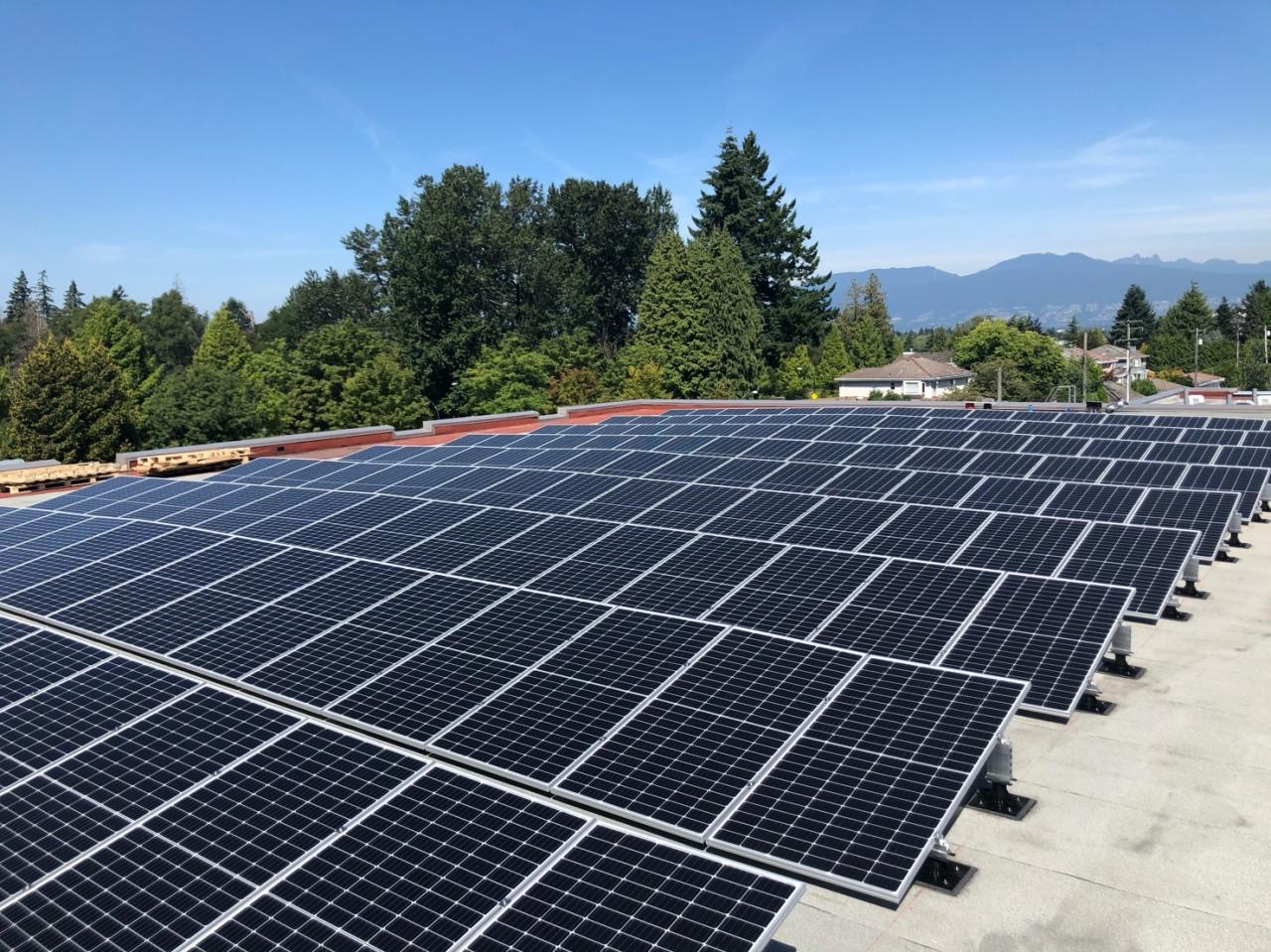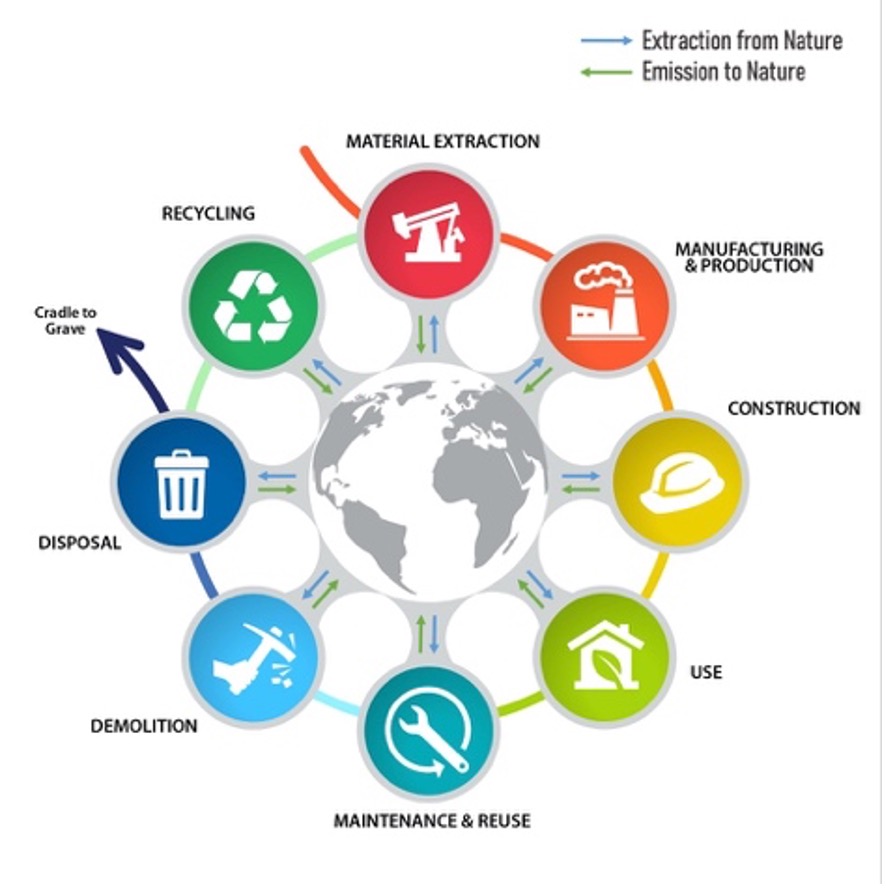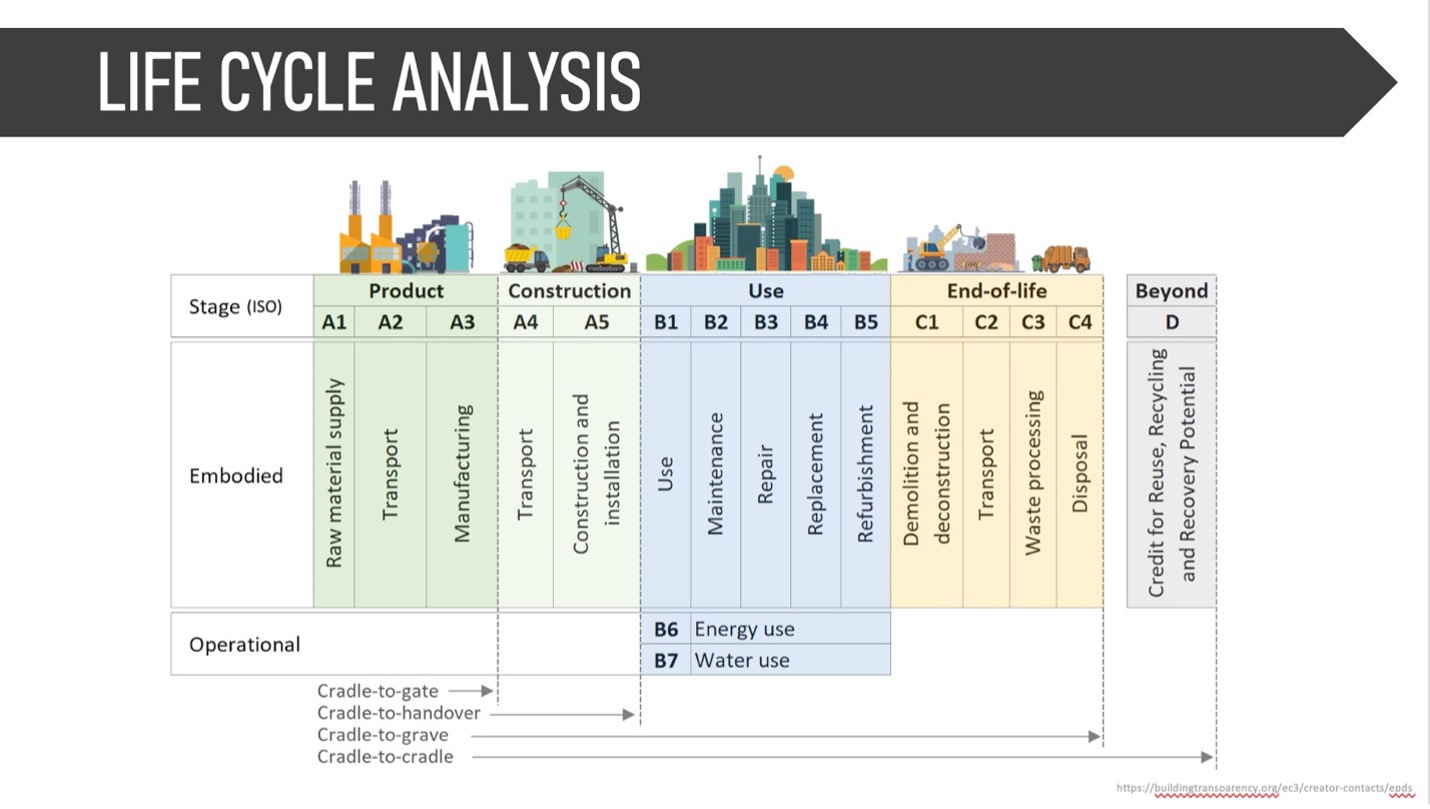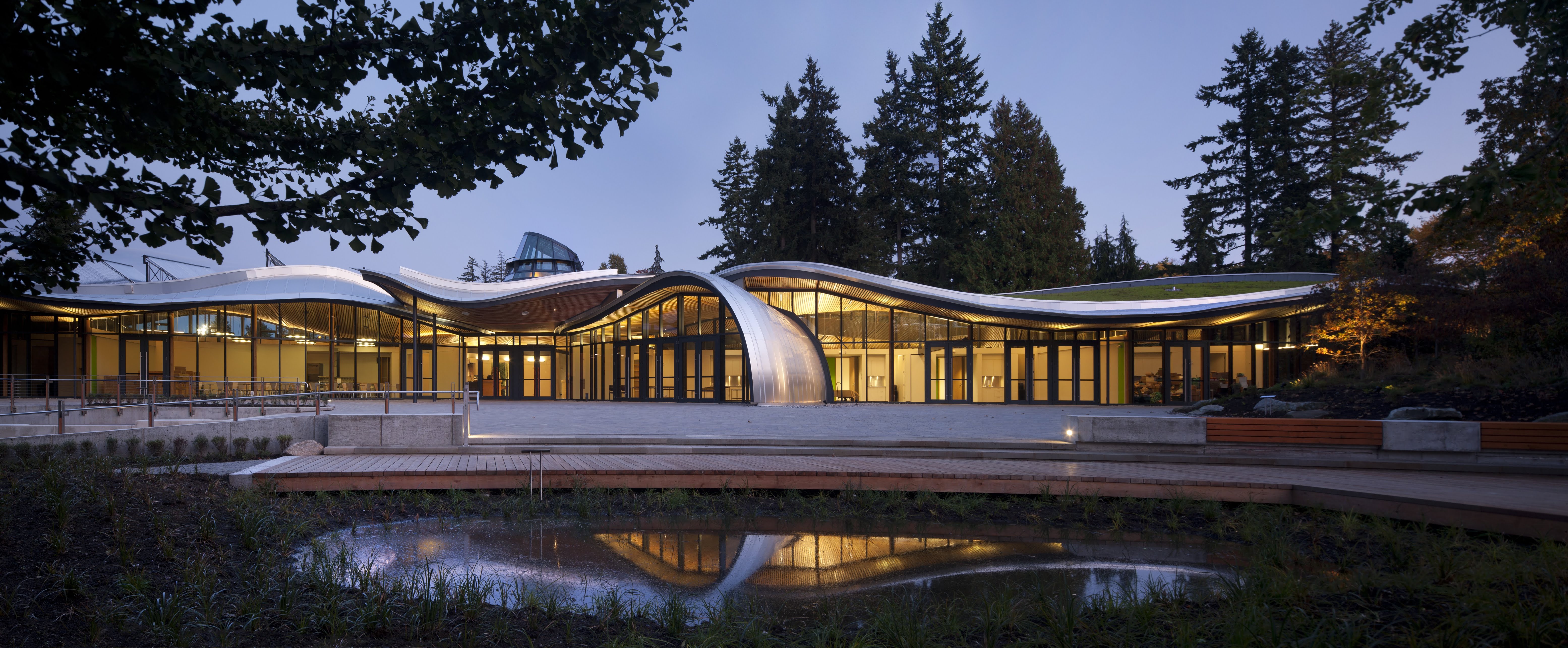The Enduring Advantage
Learning Objectives:
- Define sustainable goals for tomorrow’s projects.
- Explain how embodied carbon is measured and how this evaluation has changed the dynamics of the built environment.
- Describe product resilience and the role sourcing plays in project sustainability.
- Select commercial roofing options to maximize product attributes and sustainability goals.
- Review requirements for common industry certifications, such as LEED®, WELL, and the Living Building Challenge, and discuss the contributions from roofing in meeting those requirements.
Credits:

Photo courtesy of SOPREMA
Sustainability goes well beyond traditional considerations like regulatory compliance and reducing volatile organic compounds. Green roof installation at Halifax Seaport Farmer’s Market.
Setting the Playing Field: Defining Sustainability for Tomorrow
The National Environmental Policy Act of 1969 committed the United States to sustainability, declaring it a national policy “to create and maintain conditions under which humans and nature can exist in productive harmony, that permit fulfilling the social, economic and other requirements of present and future generations.”1 The original impetus toward sustainability was motivated by a public desire for a higher quality of life and well-being, improved human health, and long-term protection of ecosystems.2 Recognition of the adverse effects of pollutants, pesticides, and chemicals on humans and the environment helped spur the growth of sustainable policy and products.
Sustainability: An Evolving Quest
The quest for sustainability that began in the 1960’s has accelerated considerably, and has radically affected all aspects of life, including the building industry. The changes taking place within the design and construction industry today are dramatic and have happened over a very short time. This includes the evolution of the concept of sustainability itself.
In the past, products and systems considered to be sustainable had a single focus, such as recyclability or thermal efficiency. However, as codes and policies transform the built environment, the sustainability of a material or building now is drawn from its total lifecycle impact. The implications of each product, from material extraction, to manufacturing and production, into its construction and life in the building, and beyond to the product’s eventual reuse, demolition, or disposal, are measured. The sum of these calculations create an emissions profile throughout a system’s or product’s life.
Sustainability for the future hangs on three main tenets: to minimize the depletion of natural resources in order to maintain an ecological balance; to conserve energy by improving thermal efficiency; and to extend a building’s lifespan by improving long-term performance. The architect and professional design team are now responsible evaluating the health, durability, environmental safety, total lifespan, and potential for repurpose of each product they select.

Photo courtesy of SOPREMA
Commercial roofs can not only enhance a building’s sustainability through material selection, they can also host additional efficiency measures such as photovoltaic installations.
Cast in this light, sustainability is now truly concerned about long-term impacts. Thus, sustainability has become intertwined with the concept of resilience. A product’s sustainability will be measured out over time. Climate change and associated extreme weather events and changing precipitation patterns need to be factored in for a sustainable product, as they mean additional risk to businesses, organizations, and society. To respond to this change and its side effects, designers must look beyond sustainable design to strategies that enhance resilience—designers and engineers must respond by considering how it will affect the resilience of projects in decades to come. Products and systems need the ability to withstand hazards and recover quickly.
A product or material’s carbon footprint is derived from two phases: operational carbon and embodied carbon. Operational carbon is carbon emitted during the in-use phase of a building and includes the use, management, and maintenance of the product, as well as energy and water consumption. Embodied carbon accounts for all other emissions of that product, including raw materials extraction, the processing, shipping, manufacturing of product, construction, demolition, and ultimate disposal.
Today, sustainability of products is best comprehended via the measurements and impacts of material health and environmental impact.

Image courtesy of SOPREMA
Sustainability and lifecycle impact map for products. To provide a true profile of total environmental impact, carbon emissions should be calculated for a material’s entire lifecycle.
This shift in definition is reflected by recent policy trends. Municipalities, states, and federal standards are pushing new building performance standards. In Boston, building emission standards taking effect in 2025 will set limits on new buildings over 35,000 gross square feet. For example, new multifamily construction must have emissions under 4.1 kgCO2e/SF/yr. The New York City Department of Buildings released an advisory board report with recommendations for city officials on implementing Local Law 97, which adds GHG emission limits for most buildings larger than 25,000 square feet starting in 2024. Even stricter standards would take effect in 2030 under the law. The White House issued a New Federal Standard with a goal of 50 percent building emissions reduction by 2032, based on a 2008 benchmark.
Addressing Embodied Emissions
Largely overlooked historically, embodied carbon emissions account for around 11 percent of all carbon emissions worldwide.3 Embodied carbon represents a new challenge for the built environment. The World Green Building Council estimates that the built sector is responsible for 39 percent of global carbon emissions.

Image courtesy of SOPREMA
The diagram highlights the different stages and corresponding terminology for LCA. Adding embodied carbon and operational carbon gives the total or whole life carbon of a product or material.
Adding together embodied carbon and operational carbon gives the total or whole life carbon of a product or material. While knowing the complete sustainability profile is a powerful asset, how can this information be captured to impact design? Once embodied carbon is measured, how can that information be made useful?
Equipping the Professional: EPDs
An EPD is an Environmental Product Declaration. It is a third-party verified document that communicates the life-cycle environmental impacts of products. The document can be based on one product or a collection of products that are functionally equivalent. An EPD is independently verified and registered document that communicates transparent and comparable information about the life-cycle environmental impacts of products. Data included describes, at a minimum, the product’s performance characteristics, provides a description of the product’s manufacturing processes, lays out calculation criteria, and discloses environmental impacts from raw material supply, transport, and manufacturing life-cycle stages.
Equipping the Professional: HPDs
Health Product Declarations, or HPDs, report product contents and associated health information, and are focused on the chemical composition of materials. The HPD Collaborative was created and is run by a coalition of building industry architects, designers, and consultants. The Collaborative developed the HPD Open Standard to provide uniform and consistent reporting.

Image courtesy of SOPREMA
To manage environmental factors appropriately, the design professional needs tools to confidently measure those factors. Jardins Van Dussen.
Equipping the Professional: Evaluating Building Emissions
Just as an EPD allows for product transparency, there are tools that allow building emissions to be compared at the construction material and project scale. The EC3 Embodied Construction Calculator allows owners and green building certification programs to assess supply chain emissions. The tool allows embodied carbon limits and reductions to be set, establishing an optimum embodied carbon level and highlighting available reductions for the project. The Athena Sustainable Materials Institute Impact Estimator, first released in 2002, provides a cradle-to-grave life cycle inventory profile for an entire building. Users enter basic design information, such as bay size and loads, and the software calculates the bill of materials and the associated environmental impacts. Athena is one of several whole building LCA tool that can be used to explore the environmental footprint of different material choices and core-and-shell options. This software can model over 1200 structural and envelope assembly combinations for quick and easy comparison and can be uploaded through Building Information Modeling (BIM).
There are many additional resources available to aid in product evaluation. A few key ones include The Mindful Materials with its Common Materials Framework which is a coalition-built framework designed to organize and align sustainability data, so that it can be consistent across platforms, pledges, and organizations. Another is the Sustainable Minds® Transparency Catalog which provides help by simplifying the delivery of product transparency information. Products are organized by CSI category offering the ability to compare information by manufacturer.
Cradle to Cradle Certified® is an international certification focusing on the health of a product. It is a leading multi-attribute standard used globally and across industries to innovate and optimize materials and products according to the world’s most advanced science-based measures. The Cradle to Cradle Certified® Product Standard provides the framework to assess the safety, circularity and responsibility of materials and products across five categories of sustainability performance: material health, product circularity, clean air and climate protection, water and soil stewardship, social fairness.
UL GREENGUARD is a certification for low-VOC products. It helps demonstrate both compliance with key chemical emission standards and the manufacturer’s commitment to healthier indoor environments. Numerous building programs, standards, and specifications worldwide recognize and refer to the UL GREENGUARD Certification program.

Photo courtesy of SOPREMA
Designers must look to strategies that respond to the disruption of life as we know it by considering how it will affect the resilience of projects in decades to come. Bank of Canada.











